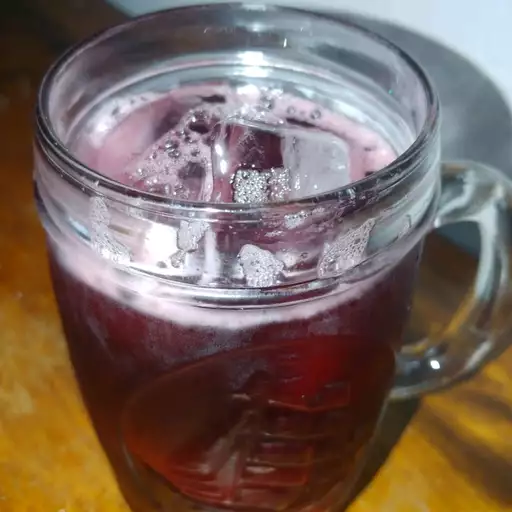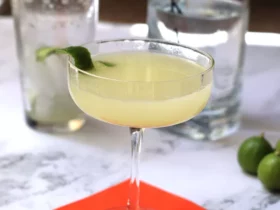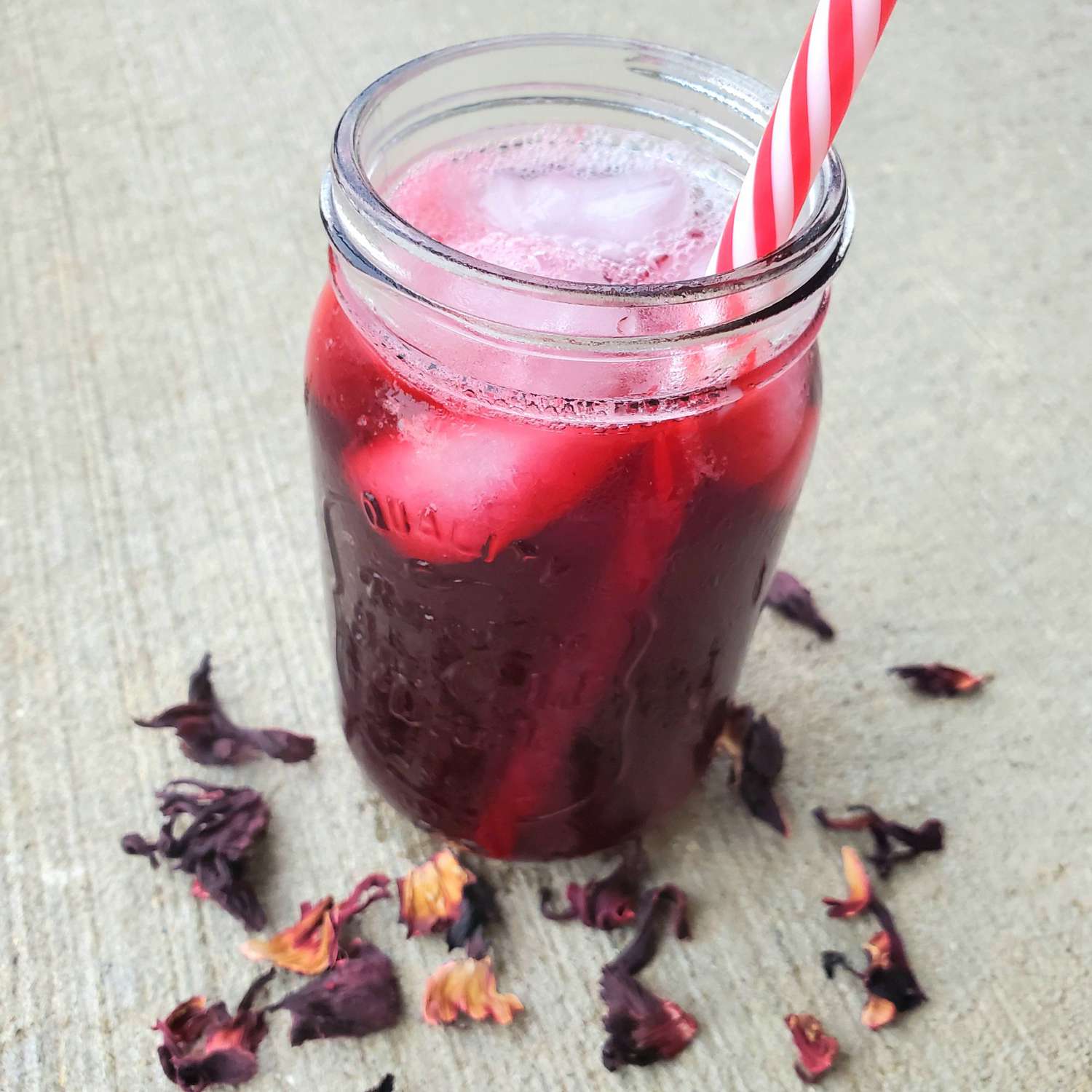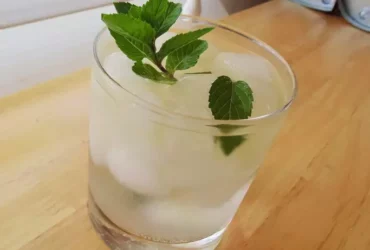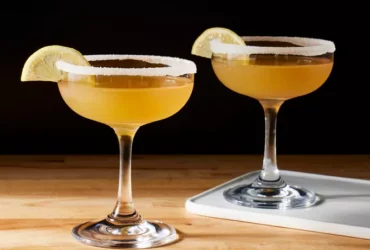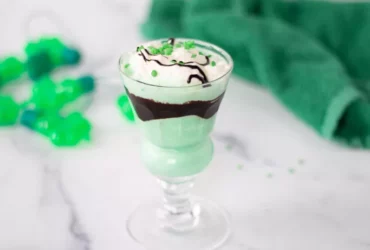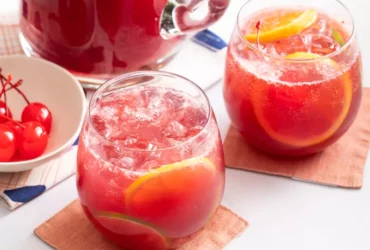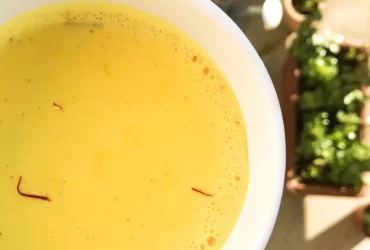History of Agua de Jamaica
Origins in Mexico and Central America
The rich history of _Agua de Jamaica_, also known as Iced Hibiscus Tea, dates back to ancient civilizations in Mexico and Central America.
Its origins can be traced back to the Mayans and Aztecs, who revered the Hibiscus sabdariffa, a species of hibiscus flower native to the region.
In pre-Columbian times, the Aztecs used the Calabash flower as a remedy for various ailments, including fever, indigestion, and menstrual cramps.
The flower’s medicinal properties were also recognized by the Spanish conquistadors, who brought back knowledge of its use to Europe during their colonial conquests.
However, it wasn’t until the 16th century that Hibiscus sabdariffa became a staple in Mexican and Central American culture, where it was used to make a refreshing drink called _Agua de Jamaica_.
The name “Jamaica” is believed to be a misnomer, as the plant did not originate from the island of Jamaica, but rather was introduced to the Caribbean by Spanish colonizers who brought it back from Central America.
Today, Agua de Jamaica remains a beloved and iconic drink throughout Mexico and Central America, particularly during special occasions such as weddings and holidays.
The drink’s popularity has also spread globally, with many health-conscious individuals and enthusiasts experimenting with its unique flavor and potential health benefits.
When brewed as a tea, Hibiscus sabdariffa is said to possess high antioxidant properties, making it a natural remedy for various health conditions, including hypertension and diabetes.
In the context of the Iced Hibiscus Tea recipe, _Agua de Jamaica_ offers a revitalizing and caffeine-free alternative to traditional tea or coffee.
The Hibiscus sabdariffa flower’s sweet-tart flavor profile and deep red color make it an excellent addition to any summer gathering or outdoor event.
This traditional beverage dates back to ancient times in Mesoamerica, where hibiscus sabdariffa was used as a medicinal plant by the Aztecs.
The history of Agua de Jamaica, a traditional Mexican beverage, dates back to ancient times in Mesoamerica, where the hibiscus sabdariffa plant was used as a medicinal plant by the Aztecs.
The Aztecs valued the hibiscus plant for its numerous health benefits and used it to treat various ailments, including high blood pressure, fever, and digestive issues.
During the Spanish conquest of Mexico, the hibiscus plant was introduced to other parts of the Americas, where it became a popular ingredient in traditional medicine and cooking.
Agua de Jamaica gained popularity as a refreshing drink during the colonial period, when the Spaniards brought their own traditions and customs to the New World.
The recipe for Agua de Jamaica typically involves steeping dried hibiscus sabdariffa flowers in boiling water, then sweetening with sugar or honey to taste.
In Mexico, Agua de Jamaica is often served at social gatherings and celebrations, such as weddings and holidays like Día de los Muertos.
The beverage has also become popular around the world, with many variations of the recipe available depending on regional ingredients and flavors.
Below are some common benefits associated with drinking Agua de Jamaica:
- Lowers blood pressure
- Rich in vitamins A and C
- Anti-inflammatory properties
- Cools the body during hot summer months
Overall, Agua de Jamaica is a refreshing and nutritious beverage with a rich history that continues to be enjoyed today.
Influence from Spanish Conquest
The origins of Agua de Jamaica date back to pre-Columbian times, where hibiscus flowers were used for medicinal and spiritual purposes by the ancient Mayans and Aztecs in what is now Mexico.
After the Spanish conquest of Mexico in 1521, hibiscus was introduced to other parts of Latin America, including Central and South America, as well as the Caribbean islands.
The Spanish colonizers were known for their use of hibiscus flowers in traditional medicine, where they believed it had healing properties that could treat a range of ailments, including fever, digestive issues, and skin conditions.
As a result of the Spanish influence, the traditional drink made from hibiscus flowers became popular throughout Latin America and was often served at social gatherings and celebrations.
In many countries, including Mexico, El Salvador, and Guatemala, Agua de Jamaica has become an integral part of local culture and tradition, with different families having their own secret recipes for preparing the drink.
Today, Agua de Jamaica is enjoyed throughout the region, often served as a refreshing and healthy alternative to other soft drinks and is frequently consumed during hot summer months or at social events.
The recipe typically involves steeping dried hibiscus flowers in water, which produces a deep red-colored liquid with a distinct flavor that is slightly tart and fruity.
Agua de Jamaica can be served chilled, either on its own or mixed with other ingredients such as lime juice, sugar, and ice to create a refreshing and revitalizing drink.
The drink has gained popularity in recent years among those looking for a low-calorie, caffeine-free alternative to traditional sodas and teas.
After the arrival of the Spanish conquistadors, hibiscus tea became a popular drink among the locals and traders.
The history of Agua de Jamaica, also known as Iced Hibiscus Tea, dates back to pre-Columbian times when hibiscus flowers were used by indigenous peoples in Mexico for medicinal and ritual purposes.
However, it was the arrival of the Spanish conquistadors that brought about a significant shift in the popularity of hibiscus tea. The Spanish colonizers discovered the drink among the locals and traders, who had learned to cultivate and use the flowers for various purposes.
Hibiscus tea became a staple beverage in Mexico, particularly during the 19th century when it was served at markets and street vendors. The drink was known as “Agua de Jamaica” or “Hibisco” and was sold by women who would harvest the hibiscus flowers from their own gardens to prepare the tea.
During this time, Agua de Jamaica became a popular refreshing drink among locals, traders, and travelers alike. It was often served over ice on hot summer days, hence its name “Iced Hibiscus Tea”.
The drink gained further popularity in Mexico City during the mid-20th century when it began to be sold by street vendors known as “vendedores de agua” or water sellers.
Today, Agua de Jamaica remains a beloved and iconic drink in Mexican culture. Its bright red color and tart flavor have made it a staple at markets, fairs, and social gatherings throughout the country.
The recipe for Agua de Jamaica has remained relatively unchanged over time. The basic ingredients include dried hibiscus flowers, sugar, lime juice, and water. Some variations may also include additional ingredients such as mint or spices to give the tea a unique flavor.
In recent years, Agua de Jamaica has gained international recognition and popularity. It is now available in many restaurants and cafes around the world, particularly in areas with a strong Latin American influence.
Preparation Methods
Dry Method: Steeping Dried Flowers
The Dry Method of preparation for Agua de Jamaica involves steeping dried flowers in hot water to create a flavorful and refreshing iced tea.
This method requires dried hibiscus flowers as the main ingredient, which can be purchased at most health food stores or online.
Here’s how to prepare Agua de Jamaica using the Dry Method:
- Pour 1 quart (960 ml) of boiling water over 2 cups of dried hibiscus flowers in a large glass container or teapot.
- Cover the container and let it steep for 5-10 minutes, depending on your desired intensity of flavor.
- Strain the mixture through a fine-mesh sieve into a large pitcher or jug to remove the dried flowers.
The resulting liquid can be cooled and refrigerated until chilled for serving over ice. You can also add sugar, honey, or other flavorings to taste.
Some popular variations of Agua de Jamaica include:
- Mango Agua de Jamaica: Add 1/4 cup of pureed mango to the mixture for added sweetness and tropical flavor.
- Citrus Agua de Jamaica: Add slices of orange, lemon, or lime to the mixture for a refreshing twist on the classic recipe.
This method is ideal for those who prefer a stronger tea with a more intense flavor. You can adjust the amount of dried flowers and steeping time to suit your taste preferences.
Steep one teaspoon of dried hibiscus flowers in boiling water for 57 minutes to release its flavor and color.
There are several preparation methods for making hibiscus tea, and it’s essential to choose a method that suits your needs and preferences.
The first step in preparing hibiscus tea is to select the right type of hibiscus flowers. You can use either dried or fresh hibiscus flowers, but dried flowers are more widely available and have a longer shelf life.
Preparation Methods:
- Method 1: Steeping in boiling water
- Steep one teaspoon of dried hibiscus flowers in boiling water for 57 minutes to release its flavor and color.
- This method is not recommended as it can lead to a bitter taste and a lack of flavor.
- Method 2: Steeping in cold water
- Steep one teaspoon of dried hibiscus flowers in cold water for an extended period, usually several hours or overnight.
- This method allows the flavors to meld together and creates a smoother taste.
- Method 3: Infusing in tea infuser
- Pour boiling water over one teaspoon of dried hibiscus flowers and let it steep for 5-7 minutes.
- This method is convenient and allows you to monitor the steeping time accurately.
Cooking Method: Hibiscus Syrup
To prepare Hibiscus Syrup for Agua de Jamaica, you’ll first need to create a concentrated syrup that can be diluted with water or other ingredients later. This syrup is made by steeping dried hibiscus flowers in hot water and then reducing the mixture to a thicker consistency.
Start by combining 1 cup of dried hibiscus flowers with 4 cups of water in a large pot. The ratio can be adjusted depending on your desired level of intensity, but this is a good starting point for a robust syrup.
Heat the mixture over medium heat until it reaches a boil, then reduce the heat to low and simmer for about 10-15 minutes. You’ll notice the color changing from a deep pink to a rich red as the flowers release their flavor and pigment.
Strain the syrup through a fine-mesh sieve or cheesecloth into a large bowl, discarding the solids. Allow the mixture to cool slightly before transferring it to a blender or food processor.
Add 1 cup of sugar to the blender along with any desired additional ingredients, such as lemon juice or spices, and blend until fully incorporated. This will help dissolve the sugar and create a smooth syrup.
Pour the blended mixture into a saucepan and cook over low heat, stirring occasionally, until the syrup reaches your desired consistency. This can take anywhere from 10-30 minutes depending on the thickness you prefer. You can test it by placing a small amount of the syrup between two fingers – if it’s still quite runny, continue cooking.
Once the syrup has thickened to your liking, remove it from the heat and let it cool completely before transferring it to an airtight container in the refrigerator for storage. Keep in mind that the syrup will thicken further as it cools down, so don’t overcook it.
Boil hibiscus flowers with sugar and water to create a sweet syrup, then mix it with water to serve.
To prepare a sweet syrup, start by boiling hibiscus flowers with an equal amount of sugar and water.
The ratio of flowers to sugar to water should be approximately 1:1:2, so for example, use one cup of dried hibiscus flowers, one cup of granulated sugar, and two cups of water.
Combine the hibiscus flowers, sugar, and water in a saucepan and bring to a boil over high heat.
Reduce the heat to medium-low once boiling and let simmer for about 10-15 minutes or until the mixture has reduced slightly and the flavors have melded together.
Strain the syrup into a clean glass bottle, pressing on the solids to extract as much liquid as possible. Discard the solids.
To serve the Agua de Jamaica, mix the sweet syrup with cold water in a ratio of about 1:4 or 5 parts water to one part syrup.
Stir well and chill in the refrigerator before serving over ice for a refreshing summer drink.
Nutritional Benefits and Variations
Health Properties of Agua de Jamaica
Agua de Jamaica, also known as Iced Hibiscus Tea, is a traditional Mexican drink made from the flowers of the hibiscus sabdariffa plant. This refreshing and flavorful beverage has been enjoyed for centuries in many parts of the world, particularly in Mexico and Central America.
The main ingredients required to make Agua de Jamaica are dried or fresh hibiscus flowers, water, sugar or honey to taste, and lemon slices or juice, although these last two ingredients are optional. To begin making the drink, simply steep the hibiscus flowers in boiling water for a few minutes before straining them out.
The resulting liquid is then sweetened with sugar or honey to balance its tart flavor. Some people also like to add lemon slices or juice to give it an extra boost of citrusy freshness. For those who prefer a fizzy drink, Agua de Jamaica can be carbonated by adding sparkling water.
Nutritional Benefits
-
- Vitamins and Minerals: Hibiscus flowers are rich in vitamins A, C, and E, as well as minerals such as potassium, magnesium, and iron.
-
- Antioxidants: The anthocyanins present in hibiscus flowers have potent antioxidant properties that can help protect against cell damage and inflammation.
-
- Cardiovascular Health: Consuming Agua de Jamaica may help lower blood pressure, reduce the risk of heart disease, and prevent certain cardiovascular conditions due to its high levels of potassium and antioxidants.
-
- Anti-Inflammatory Properties: Hibiscus flowers have been shown to possess anti-inflammatory properties that can aid in reducing symptoms associated with allergies, asthma, and other inflammatory diseases.
Health Properties
Agua de Jamaica has been traditionally used for various health purposes, including:
-
- Skin and Hair Care: The vitamin C content in hibiscus flowers can help boost collagen production, reduce the appearance of fine lines and wrinkles, and improve skin elasticity.
-
- Digestive Health: Hibiscus tea has been used to treat digestive issues such as constipation, diarrhea, and ulcers due to its potential to soothe the gut lining and regulate bowel movements.
-
- Immune System Support: Consuming Agua de Jamaica may help stimulate the immune system and prevent illnesses such as the common cold and flu.
Overall, Agua de Jamaica is a delicious and nutritious beverage that offers numerous health benefits when consumed regularly. Its unique flavor profile makes it an excellent choice for those looking to add some excitement to their drink repertoire while also enjoying the potential health advantages associated with hibiscus flowers.
This drink is rich in vitamins C and E, potassium, and fiber, making it an excellent choice for those seeking to improve cardiovascular health.
The Nutritional Benefits and Variations of Agua de Jamaica
Agua de Jamaica, a refreshing Iced Hibiscus Tea, is rich in vitamins C and E, potassium, and fiber, making it an excellent choice for those seeking to improve cardiovascular health.
The _Hibiscus sabdariffa_ plant, from which Agua de Jamaica is derived, is a rich source of essential nutrients. Some of the key nutritional benefits of this drink include:
- Vitamin C: Hibiscus tea is an excellent source of vitamin C, which plays a crucial role in immune function and antioxidant defenses.
- Folate: This B vitamin is essential for healthy cell growth, DNA synthesis, and preventing birth defects.
- Potassium: Agua de Jamaica is rich in potassium, an electrolyte that helps regulate blood pressure and support muscle and nerve function.
- Magnesium: Another key mineral found in hibiscus tea, magnesium supports bone health, heart rhythm, and energy production.
- Fiber: Hibiscus tea contains both soluble and insoluble fiber, making it a great choice for digestive health and satiety.
- Antioxidants: The flavonoids and anthocyanins present in hibiscus tea have potent antioxidant properties, which can help protect against cell damage and reduce inflammation.
Variations of Agua de Jamaica offer even more opportunities to explore the unique nutritional benefits of this drink. Some popular variations include:
-
- Cinnamon Agua de Jamaica: Adding a pinch of cinnamon powder enhances the flavor and aroma while providing additional antioxidant properties.
-
- Lemon Agua de Jamaica: Squeezing fresh lemon juice into the tea increases the vitamin C content and adds a burst of citrus flavor.
- Ginger Agua de Jamaica: Incorporating grated ginger provides an extra boost of anti-inflammatory compounds and supports digestion.
Incorporating Agua de Jamaica, or its variations, into your diet can be a simple way to improve cardiovascular health while also enjoying the unique flavors and aromas of this delicious iced tea.
Customizing the Recipe
Agua de Jamaica, or iced hibiscus tea, is a popular beverage in many Latin American countries, particularly Mexico and Cuba. It’s made from dried hibiscus sabdariffa flowers, which are steeped in hot water to create a rich, flavorful drink. The nutritional benefits of Agua de Jamaica make it a great alternative to sugary drinks or even some juices.
The primary ingredient in Agua de Jamaica is the hibiscus flower, which is high in vitamins C and E, calcium, iron, and potassium. It also contains antioxidants that can help protect against cell damage and inflammation in the body. Hibiscus has been studied for its potential to lower blood pressure, improve digestion, and even aid in weight loss.
When it comes to variations of Agua de Jamaica, there are many ways to customize the recipe to suit your taste preferences. One common variation is to add a splash of lime juice or a slice of orange to give the drink a bit of citrus flavor. Some people also like to add a few sprigs of fresh mint leaves for added freshness.
Another way to mix things up is to try different types of sugar or sweeteners. While traditional Agua de Jamaica is made with granulated sugar, you can substitute it with honey, agave nectar, or even stevia for a lower-calorie option. If you prefer your tea unsweetened, you can omit the sugar altogether.
You can also experiment with spices and other flavorings to give Agua de Jamaica a unique twist. Some options include cinnamon sticks, star anise, or even a few slices of fresh ginger. You can adjust the amount of flowers used in the recipe to suit your desired strength of flavor.
To make Agua de Jamaica, start by combining 1 quart (4 cups) of water with 1 cup of dried hibiscus flowers in a large pitcher or teapot. Let it steep for at least 30 minutes to allow the flavors to meld together. Strain the mixture and discard the solids before serving. You can store any leftover tea in the refrigerator for up to 3 days.
One final tip: be sure to use high-quality hibiscus flowers that are free of contaminants or additives. Look for them at your local health food store or online from reputable suppliers. With a little creativity and experimentation, you can enjoy Agua de Jamaica in many different ways and make it a staple in your household.
Add slices of orange or grapefruit to enhance the flavor, or try combining hibiscus tea with ginger and lime for a twist on this classic recipe.
Aguas frescas, also known as aguadulce or jamaica in some Latin American countries, is a traditional drink that is popular throughout Mexico and other parts of Central America. The name “aguas frescas” translates to “fresh waters,” which refers to the fact that these drinks are typically made from fruit juices, herbs, and flowers, making them refreshing and thirst-quenching. Among these refreshing beverages is Agua de Jamaica, also known as hibiscus tea, which has become a staple in many households.
One of the primary ingredients used to make Agua de Jamaica is dried rosella or hibiscus sabdariffa flowers. These flowers have been used for centuries in various cultures to create teas and infusions that offer numerous health benefits. The nutritional benefits of drinking aguas frescas, including Agua de Jamaica, are quite impressive.
Drinking Agua de Jamaica can help lower cholesterol levels due to its high content of anthocyanins and other antioxidants. These compounds work together to reduce the risk of heart disease and improve blood circulation. The tea also contains potassium, which helps regulate fluid balance in the body and can contribute to a reduction in high blood pressure.
Another nutritional benefit associated with drinking Agua de Jamaica is its potential anti-inflammatory properties. The anthocyanins present in hibiscus flowers may help alleviate symptoms of arthritis and other inflammatory conditions by inhibiting enzymes that cause inflammation. Additionally, the tea contains vitamin C, which plays a crucial role in boosting the immune system.
In terms of variations, you can experiment with different fruits or spices to create unique flavors. One method is to add slices of orange or grapefruit to enhance the flavor and aroma of the drink. Alternatively, you can try combining hibiscus tea with ginger and lime for a twist on this classic recipe.
- Best Clay Alternatives for 2025 - April 22, 2025
- Best Leadfeeder Alternatives for 2025 - April 22, 2025
- Best Snov.io Alternatives for 2025 - April 21, 2025

